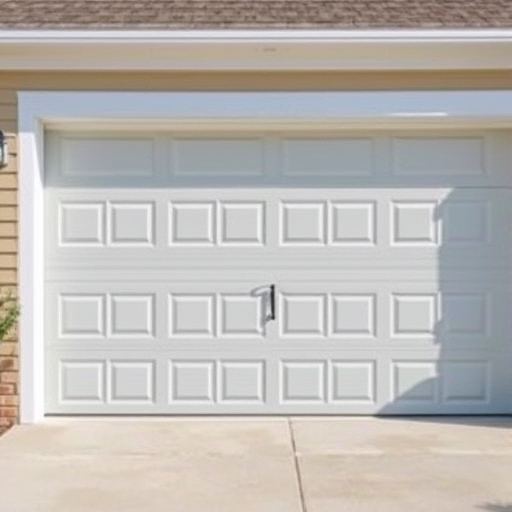How to Paint Your Garage Door: A Step-by-Step Guide
Painting your garage door is an effective way to enhance your home’s curb appeal and protect your door from the elements. Whether you’re looking to refresh a faded finish or change the color entirely, a well-painted garage door can significantly improve your home’s exterior. We will walk you through the process of painting your garage door, from preparation to finishing touches.
Why Paint Your Garage Door?
Before diving into the process, it’s important to understand the benefits of painting your garage door:
-
- Enhanced Curb Appeal: A fresh coat of paint can make your home look more inviting and well-maintained.
- Protection from Weather: Paint acts as a barrier against moisture, UV rays, and other environmental factors that can cause damage.
- Increased Property Value: A well-kept exterior can increase your home’s value, making it more appealing to potential buyers.
- Personalization: Changing the color of your garage door allows you to express your personal style.
Tools and Materials Needed
Before starting your project, gather the following tools and materials:
Tools
-
- Paintbrushes (2- to 4-inch width)
- Paint roller (optional, for larger doors)
- Paint tray
- Sandpaper (medium and fine grit)
- Drop cloths or plastic sheeting
- Painter’s tape
- Ladder (if your garage door is tall)
- Safety goggles
- Dust mask
Materials
-
- Exterior-grade paint (latex or oil-based)
- Primer (if necessary)
- Clean rags or sponge
- Mild detergent and water (for cleaning)
Step-by-Step Guide to Painting Your Garage Door
Step 1: Choose the Right Paint
Selecting the right paint is crucial for achieving a long-lasting finish. Consider the following factors:
-
- Type of Paint: For garage doors, exterior-grade paint is recommended. Latex paints are easier to clean and dry faster, while oil-based paints offer durability.
- Finish: Choose a finish that suits your style. Gloss or semi-gloss finishes are more durable and easier to clean, while satin finishes provide a softer look.
Step 2: Prepare the Area
1. Clear the Area: Move any items away from the garage door to create a clean workspace.
2. Protect Surrounding Areas: Use drop cloths or plastic sheeting to cover the ground and any nearby plants or surfaces.
3. Tape Off Edges: Use painter’s tape to mask off areas around windows, trim, and the ground to prevent paint splatters.
Step 3: Clean the Garage Door
A clean surface is essential for proper paint adhesion. Follow these steps:
1. Wash the Door: Use a mixture of mild detergent and water to scrub the door. Remove dirt, grease, and grime.
2. Rinse and Dry: Rinse the door with clean water and let it dry completely before proceeding.
Step 4: Repair Any Damage
Inspect the garage door for any damage that needs repairs:
-
- Dents and Dings: Fill small dents with a suitable filler and sand smooth.
- Rust: For metal doors, remove rust with sandpaper or a wire brush. Apply a rust-inhibiting primer if necessary.
Step 5: Sand the Surface
Sanding the surface helps the new paint adhere better:
1. Sand the Door: Use medium-grit sandpaper to scuff the existing paint. This step is especially important if the door has a glossy finish.
2. Clean Again: Wipe down the door with a damp cloth to remove any dust created during sanding.
Step 6: Prime the Door (if necessary)
Applying a primer can improve paint adhesion, especially if you are making a drastic color change or painting over bare metal or wood.
1. Select the Right Primer: Use a primer compatible with your chosen paint type (latex or oil-based).
2. Apply Primer: Use a brush or roller to apply an even coat of primer. Allow it to dry completely according to the manufacturer’s instructions.
Step 7: Paint the Garage Door
Now it’s time to apply the paint:
1. Stir the Paint: Stir the paint thoroughly to ensure an even consistency.
2. Apply the First Coat:
-
- Start with the edges and corners using a brush.
- Use a roller for larger flat areas to achieve a smooth finish.
- Work in sections to avoid the paint drying before you can smooth it out.
3. Allow to Dry: Follow the manufacturer’s drying time, usually a few hours.
4. Apply Additional Coats: Depending on the color and type of paint, you may need 2-3 coats for full coverage. Lightly sand between coats for the best finish.
Step 8: Finishing Touches
Once the final coat is dry, remove the painter’s tape carefully:
-
- Inspect the Finish: Check for any missed spots or imperfections. Touch up as needed.
- Clean Up: Remove any drop cloths and clean your brushes and rollers with soap and water (for latex paint) or mineral spirits (for oil-based paint).
Step 9: Allow to Cure
After painting, allow the garage door to cure for several days before closing it. This will help ensure the paint sets properly and prevents any damage to the finish.
Maintenance Tips for Your Painted Garage Door
To keep your garage door looking fresh and new, consider the following maintenance tips:
- Regular Cleaning: Wash the door every few months to remove dirt and grime.
- Inspect for Damage: Regularly check for chips, scratches, or rust and address them promptly.
- Repaint as Needed: Depending on your climate and the quality of paint used, you may need to repaint every 5-7 years.
Latex vs. Oil-Based Paint for Garage Doors
| Feature | Latex Paint | Oil-Based Paint |
|---|---|---|
| Drying Time | Quick (1-2 hours) | Slow (6-8 hours) |
| Cleanup | Soap and water | Mineral spirits |
| Durability | Good, but less than oil-based | Very durable |
| Finish Options | Matte, satin, gloss | Glossy |
| Odor | Low | Strong |
| Flexibility | More flexible, less likely to crack | Less flexible, prone to cracking |
Frequently Asked Questions (FAQ)
How long does it take to paint a garage door?
The total time can vary based on the size of the door and the number of coats applied. Generally, you can expect to spend a full day on the project, including preparation, drying time, and cleanup.
Can I paint my garage door in the winter?
Yes, but it’s essential to check the temperature and humidity levels. Most paints require a minimum temperature of 50°F (10°C) for proper adhesion and drying.
How do I choose a color for my garage door?
Consider the overall color scheme of your home. Look at the colors of your siding, trim, and roof. You can also use paint samples to visualize how different colors will look on your door.
Is it necessary to use a primer?
Using a primer is not always necessary but is recommended if you are painting bare wood, metal, or making a significant color change. Primers help the paint adhere better and provide a more uniform finish.
What if my garage door has peeling paint?
If your garage door has peeling paint, sand down the affected areas to remove the loose paint, and then apply a primer before painting. Be sure to clean the surface thoroughly before applying the new paint.
Conclusion
Painting your garage door can be a rewarding DIY project that enhances the beauty and longevity of your home’s exterior. By following this step-by-step guide, you can achieve a professional-looking finish that will make your garage door stand out.
Remember to choose the right materials, take your time during the process, and maintain your door for years of enjoyment. Happy painting!

